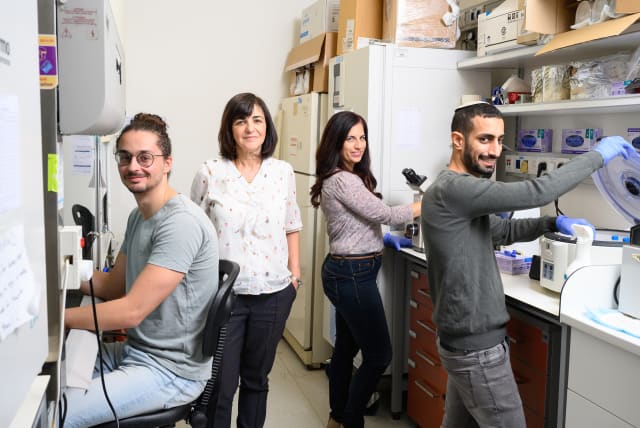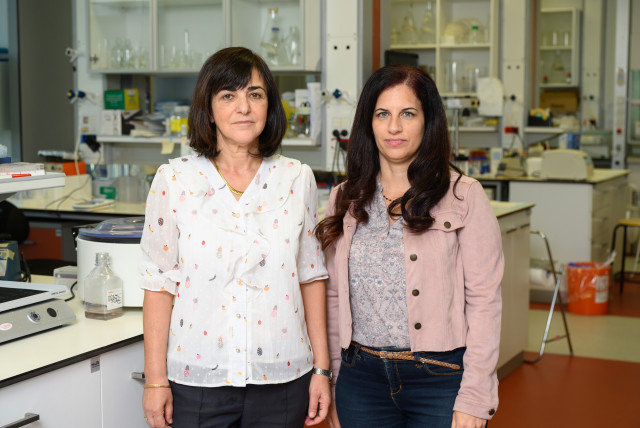Weizmann study makes a step towards treatment for incurable Huntington's disease

In a significant development, researchers at the Weizmann Institute received promising results after testing possible treatments for Huntington's disease (HD) on mice.
Huntington’s disease (HD) is a cruel, inherited, incurable, but fortunately, rare disorder that causes the progressive degeneration of nerve cells in the brain. It was named for Dr. George Huntington, who studied medicine at New York University.
Rarity of the disease
Huntington first encountered patients with the disease when he was eight years old while accompanying his father and grandfather on their medical rounds. In 1872, when he was 21, he described this disease so accurately and succinctly that the disorder was later named for him.
The prevalence is rare, occurring in only three to seven per 100,000 people of European ancestry and even less so in those of African, Japanese, and Chinese descent. HD victims have a life expectancy of 10 to 25 years, but they can contract the disease earlier than this or much later.
At present, there is no cure for HD, but there are some treatments that can help ease certain symptoms, including difficulty concentrating and memory lapses; depression; stumbling and clumsiness; involuntary jerking or fidgety movements of the limbs and body; mood swings and personality changes; problems swallowing, speaking, and breathing; and difficulty moving.
Certain drugs, such as haloperidol, tetrabenazine, and amantadine, can help control the unusual movements caused by HD, which had a famous victim – folk singer Woody Guthrie, who died in 1967.
The human brain is a well-guarded control center. Its system of blood vessels is surrounded by a densely packed cellular barrier that prevents most substances from getting in or out. This fortified architecture protects the brain, but it can also stop it from getting help when it needs it, for example, in the case of a neurodegenerative disease.
The scientific breakthrough
In a new study published in the journal EMBO Molecular Medicine under the title “Lowering mutant huntingtin by small molecules relieves Huntington’s disease symptoms and progression,” Prof. Rivka Dikstein of the Weizmann Institute of Science’s Department of Biomolecular Sciences and her team identified two small molecules that manage to penetrate the blood-brain barrier and reduce the levels of a defective protein that causes HD, the progress of the disease in mouse models, and even reversed some of its symptoms.
A possible ray of hope was discovered in 2019 by Dr. Anat Bahat, a researcher in Dikstein’s lab. For years, the lab has conducted basic research into the Spt5 regulatory protein, which has many functional segments that help produce messenger RNA molecules and is especially important in the production of proteins involved in inflammation.
Bahat and her colleagues found that several small molecules can inhibit certain functions of Spt5 without causing significant damage to the protein’s other functions. The researchers then found three small molecules that specifically inhibited the expression of mutant huntingtin (a disease gene linked to Huntington’s disease) without harming the expression of normal huntingtin and other proteins linked to inflammation.
In the new study, Bahat led a team that examined 17 molecules with chemical structures similar to those found effective in the previous study in the hope of identifying the most effective inhibitors of mutant huntingtin expression. Using cell cultures from a mouse model of HD, the researchers identified the two most effective molecules.
Testing the case
They then tested the new molecules in cell cultures from human patients with varying degrees of genetic defect and, in every case, identified a significant drop in the amount of the mutant protein. At the same time, there was no decrease in the expression of the nonmutant protein – evidence that the new molecules were doing their job with great precision.
The next stage of the study was to test the two selected molecules in genetically modified mice that expressed a fully human version of the mutant huntingtin gene. To begin with, the mice were treated for more than a month when they were elderly and already exhibiting clear signs of the disease via an infusion delivered directly into the damaged part of the brain. The treatment reduced the expression of the mutant copy of the gene and increased the proportion of the relevant healthy proteins in the damaged area of the brain.
The treatment also managed to relieve some of the damage caused by HD. It increased the expression of two genes that are usually harmed the longer the disease progresses – one a growth factor that is vital for nerve cell survival and the other belonging to the mitochondria.
“Even though the aged mouse model simulated the disease at an advanced stage, the treatment succeeded in turning back the hands of time to some extent,” Bahat said. “In behavior studies, we observed reduced levels of anxiety and improved balance and coordination in the treated mice.”
However, administering an infusion directly into the damaged area of the brain demands a complex surgical procedure that is both risky and painful for patients. The researchers thus sought to establish whether the drug would be effective if given as a pill or via a subcutaneous injection.
They were thrilled to discover that these alternative methods were also successful in reducing the levels of mutant huntingtin in the mice’s brains, and that the molecules managed to complete the long journey from the mouth or the skin to the brain without undergoing any significant change. Their characteristics allow them to cross the blood-brain barrier and enter the sick area directly once they arrive at their destination.
The future of the study and treatment
One of these small molecules demonstrated a healing effect at especially low doses – an important property for a drug designed for human use. Its downside, however, was that it affected more than 1,000 other genes. The second molecule required higher doses but proved to be a relatively targeted weapon: It reduced the expression of the mutant gene without causing side effects or any widespread changes to other genes.
In the final part of the study, the researchers examined the effects of the treatment when administered orally over two months at the early stage, when the first signs of the disease had only just begun to appear. All of the sick mice exhibited elevated levels of anxiety before the start of the experiment, but for those who received the treatment, anxiety returned to normal levels.
Over time, the loss of balance and the hyperactivity of diseased mice in the control group worsened, while the treated ones had less substantial damage to their balance and did not experience hyperactivity. These findings, coupled with other tests, indicated that the new drugs delay the disease’s progress when administered at an early stage.
“We were delighted to find that small molecules managed to reach the brain without undergoing changes or disintegrating along the way,” Dikstein said. “While other experimental treatments require repeated brain or spinal surgery, these molecules, delivered orally or using an injection, could pave the way for an effective and safe treatment of HD.
“In recent years, it’s become clear that a certain function of large regulatory proteins can be targeted precisely, using tiny molecules without harming the overall functioning of these proteins. This understanding could lay the foundations for new treatments for a variety of diseases.”
Jerusalem Post Store
`; document.getElementById("linkPremium").innerHTML = cont; var divWithLink = document.getElementById("premium-link"); if (divWithLink !== null && divWithLink !== 'undefined') { divWithLink.style.border = "solid 1px #cb0f3e"; divWithLink.style.textAlign = "center"; divWithLink.style.marginBottom = "15px"; divWithLink.style.marginTop = "15px"; divWithLink.style.width = "100%"; divWithLink.style.backgroundColor = "#122952"; divWithLink.style.color = "#ffffff"; divWithLink.style.lineHeight = "1.5"; } } (function (v, i) { });

